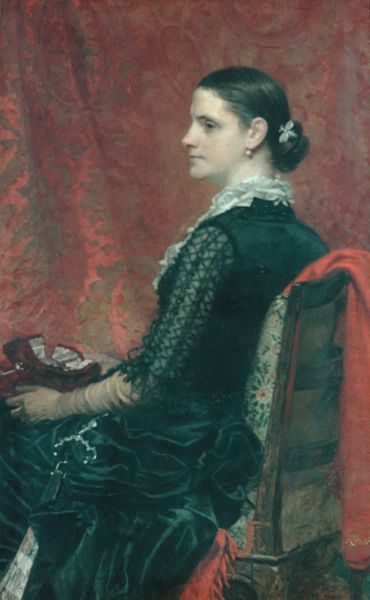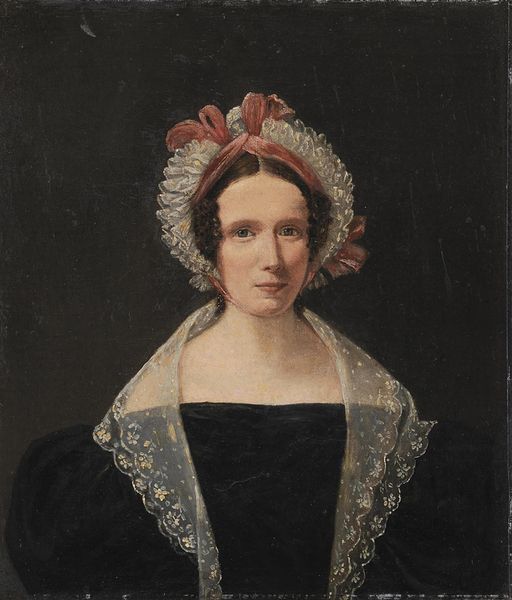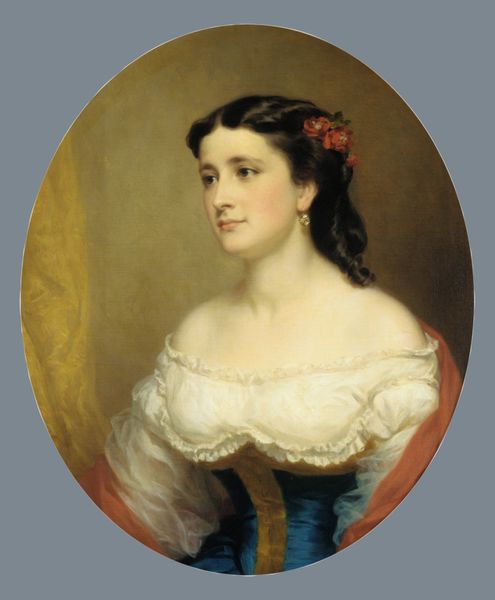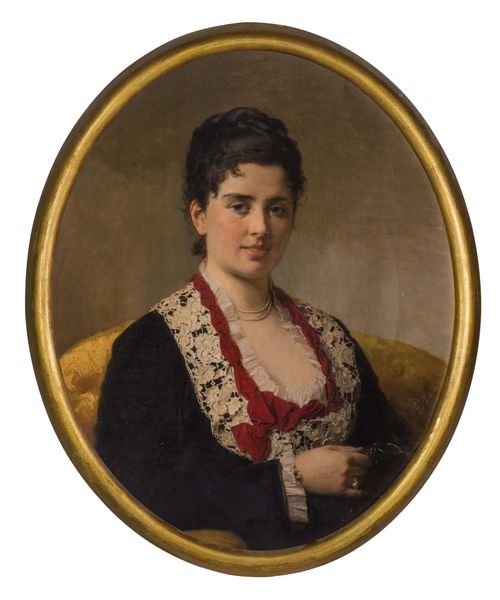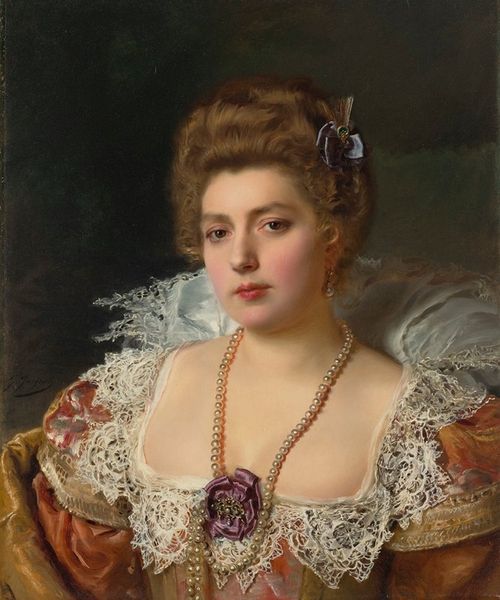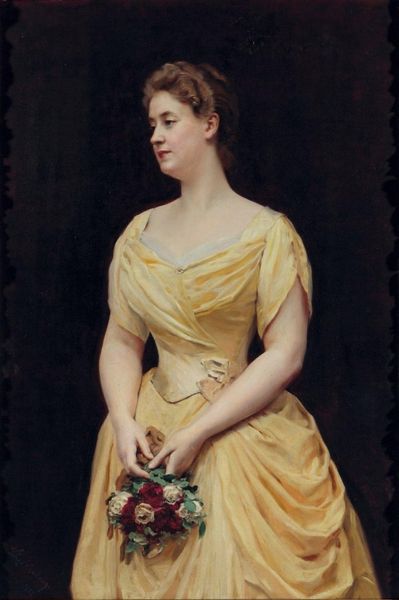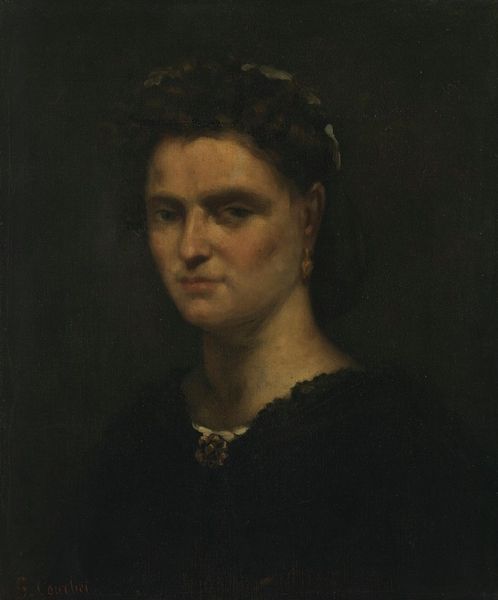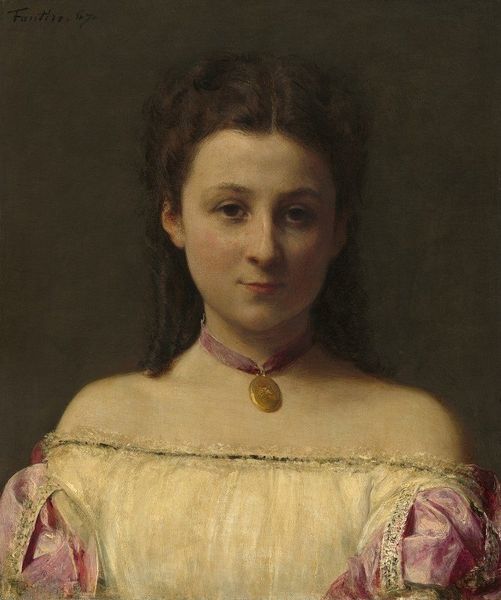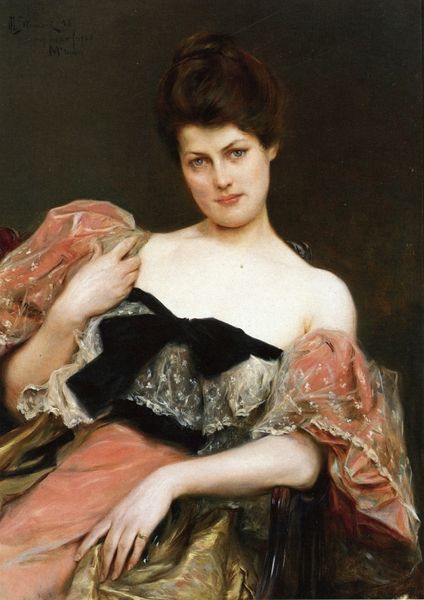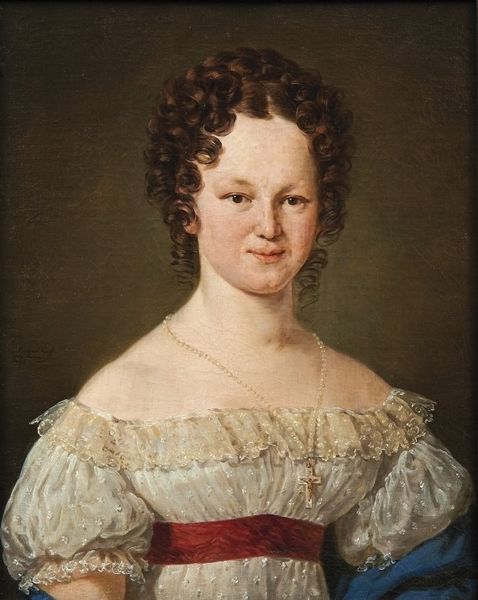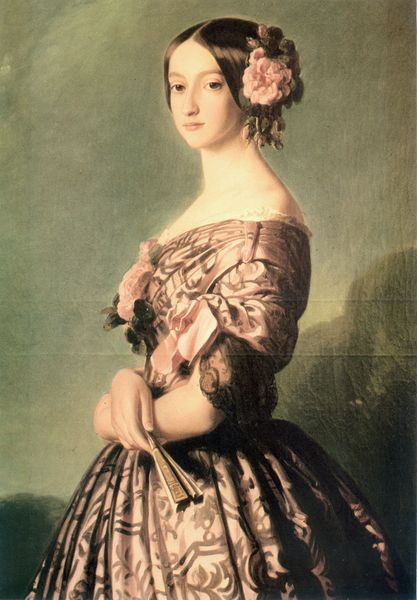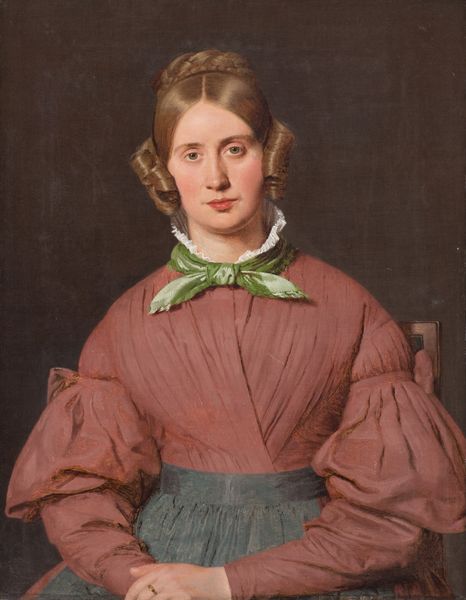
Dimensions: 66.5 cm (height) x 53 cm (width) (Netto)
Editor: So, this is Elisabeth Jerichau Baumann’s "Queen Olga of Greece," painted in 1868. It’s oil on canvas and a rather stunning portrayal. I’m immediately drawn to the exquisite detail in her dress, especially the lace. What do you see in this piece? Curator: Immediately, I think of the layers involved. Literally, of course, with oil paint applied to canvas in stages. But consider also the social layering at play. We see Olga adorned in pearls and lace – products of exploited labor from around the globe. What did it mean for a female artist like Baumann to depict royalty consuming such materials? Editor: That’s interesting. I hadn’t considered the labor aspect so directly. It feels removed from the image at first glance. Do you think Baumann was making a deliberate commentary on that? Curator: Perhaps, or perhaps she was simply participating in the cycle. We cannot know for certain without Baumann's personal writings, and that ambiguity itself speaks volumes. But looking at the composition - the Queen's averted gaze, the slightly somber tone – there is a hint of something more complex than mere celebration. Note, also, how the handling of paint for the Queen's skin is so smooth, whereas the dress exhibits freer, looser strokes. What do you read in that distinction? Editor: Maybe a difference in focus? That Baumann prioritized conveying the queen’s status but used a more expressive approach for the material goods surrounding her. Curator: Exactly! That contrast forces us to think about the values embedded in the making of this portrait. We cannot simply divorce it from its context, which includes access to those raw materials for the paint itself. The choice to paint Olga becomes a product of resources, class, labor, and patronage. Editor: That makes me rethink my initial read completely. Seeing it now as much more about material realities and production. Curator: Precisely. It’s a great reminder to look beyond the surface and consider the complex social and material conditions inherent to artistic creation.
Comments
No comments
Be the first to comment and join the conversation on the ultimate creative platform.
